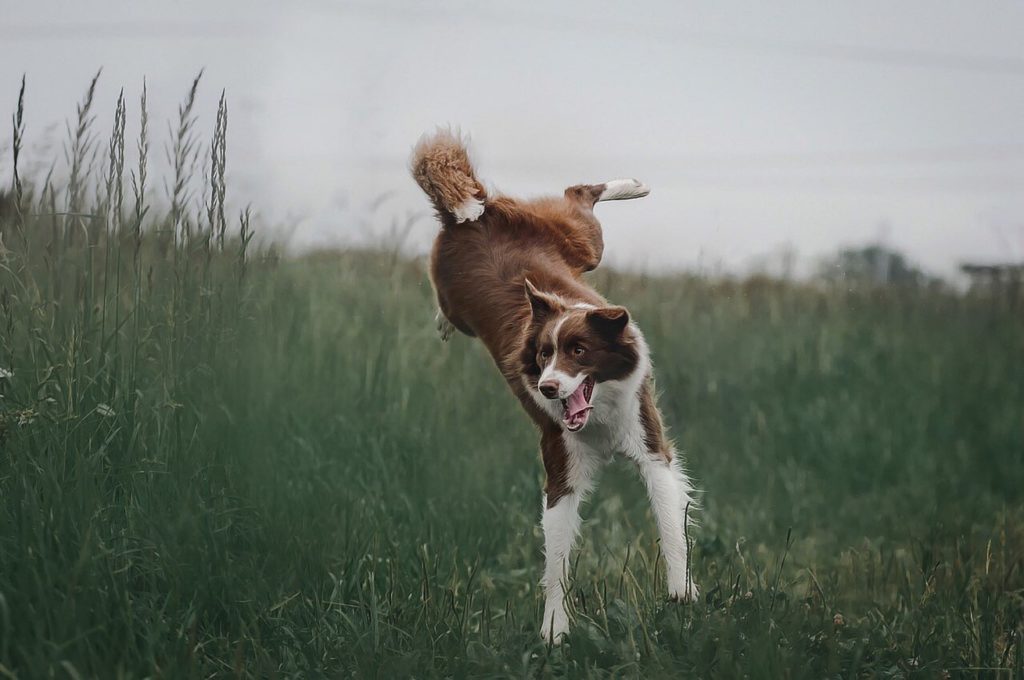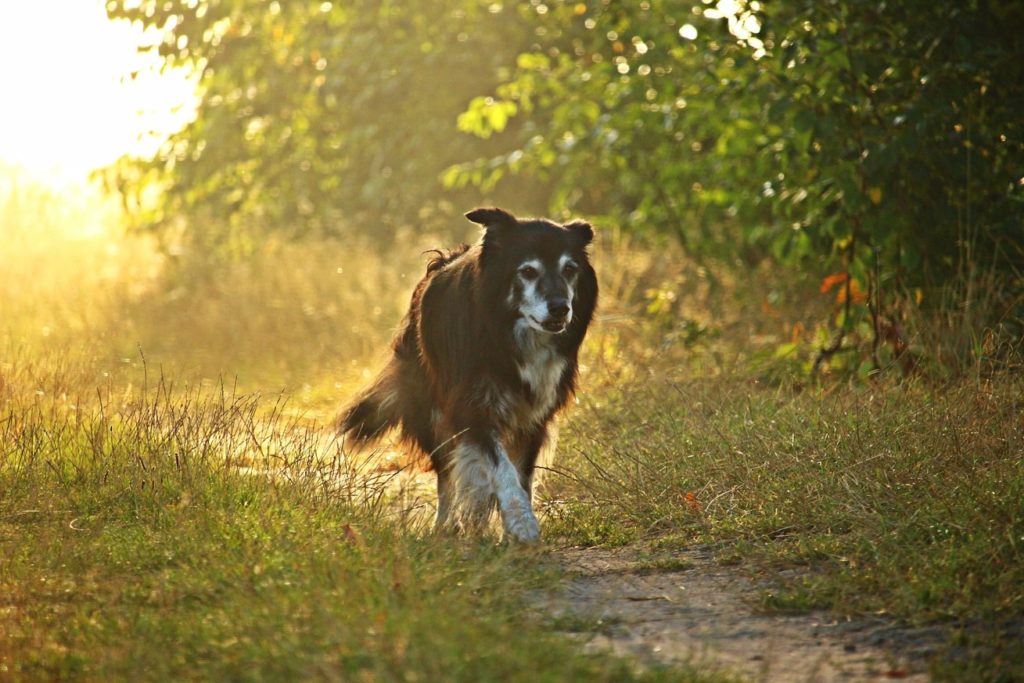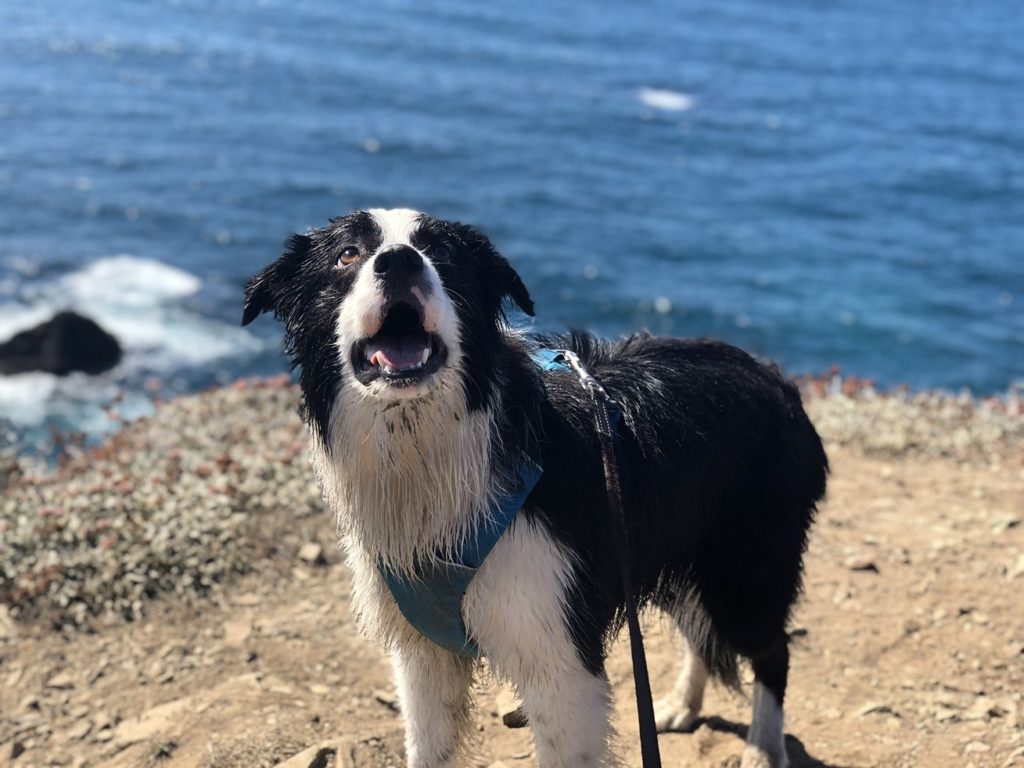For millennia, humans have been forced to go outside out of necessity or, more recently, to reconnect with nature. Almost at the same time, every step that you take in nature, you want to take it with your Border Collie. In this article, I have listed activities for you and your Border Collie that you can do in natural surroundings.

Over the years, many dogs and humanity in general, have become more domesticated and more suited to life inside, with the occasional walk into the manicured backyard grass.
However, this does not apply to all of humanity or Border Collies. They still yearn for the call of nature, the attractiveness of the path, the smell of water, and the feel of the wind through their hair.
What Activities Can I Do with My Border Collie?
Border Collies can take long walks in any terrain but prefer those where they can run unhindered, and do “herding” and searching. Since they are agile, difficult topography also works for them.
Collies are excellent climbers. They were originally bred in the borders of Scotland to run through rugged fields and mountains herding flocks of sheep to their shepherds. Climbing rough terrain is in their genes!
They love nothing more than spending a long day hiking up hills and mountains. Off-road adventures are a Border Collie’s favorite and they love jumping over fallen logs and exploring the wild.
And although it depends on the individual collie, it is not uncommon for them to drink water like a duck; so, walks that include, say, a picnic on the lake can be a good day.
Hiking with Border Collies
Hiking is a great way to experience nature. It is obvious that you will want to take your Border Collie with you. It is invigorating to watch them enjoy the fragrance, sounds, and atmosphere of nature.
Just like you don’t go hiking in your pajamas, there are a few things to keep in mind before taking them on a hike. Do you have hiking equipment for your Collie? Have you brushed up on their training? Have you considered safety and emergency situations?
Make sure that you consider all of them so that it’s an enjoyable activity for both you and your collie.
Some Common Hiking Etiquettes If You Go with Your Collie

Don’t go assuming that your Collie is welcome wherever you are going for hiking. Some national parks ban dogs, and you can be fined a hefty sum of money for violating the rules. Banning dogs may seem arbitrary, but it’s understandable if you consider the wildlife they can affect. Or the nature’s ecosystem that they can possibly disturb.
It’s your responsibility that you inquire about all the rules before you take your Collie places to hike. You would most likely find the information on the official websites of the location.
The American Kennel Club suggests that regardless of the hiking location you chose, you should follow the B.A.R.K rule. B.A.R.K stands for:
B- Bag your dog’s waste
A- Always put a leash
R- Respect the wildlife
K- Know where you can go
Don’t forget to bring plastic bags to clean up after your dog. Yes, respectable owners collect excrement after animals even in the forest. You may think that your Collie’s waste is just part of nature, isn’t it? I mean, the waste of wildlife is most definitely there, right? However, the waste of your Border Collie will be a foreign substance for the local creatures and that can cause disturbance to them.
Putting a leash on your Border Collie is a good idea. Your dog may or may not be hostile to other dogs there, but you can’t know for sure about other dogs. Even if there aren’t any other dogs around, your Border Collie can encounter a skunk or may eat something poisonous.
Imagine him out of your sight when you go hiking, can you save him if he gets into trouble?
Putting him on a leash will save you a lot of trouble. He will be in your control and won’t get out of your sight. If he faces any problem, you will be there for him.
If you are in an area where you can let him off-leash, do that only when you have verbal control over him. You should at least train your Border Collie to be obedient before going hiking with him.
Training Your Border Collie for Hiking
At least minimal obedience training is necessary for your BC to be taken for hiking. He needs to be well-behaved and socialized so that he doesn’t cause any problems for other hikers. Make sure that your BC listens to your basic commands like “sit”, “stay”, and “come”.
Walking by your side politely is one more thing that he needs to do. He doesn’t have to be on the hiking trail but getting dragged into the woods isn’t the point of hiking either. Just in case if you drop the leash, your verbal call should be reliable.
You can’t keep your dog safe if he’s out of your sight. Hiking trails have many dangers. Hikers’ trash, animal waste, and poison ivy are just a few examples of things that can seriously harm your dog.
You should also teach him the “leave it” command to drop things at your cue. Training toys for Border Collies can be helpful while training them.
A few additional commands like “quiet” to curb his barking can make your enjoyment of nature in silence more pleasant.
Hiking Equipment for Your Border Collie
For an enjoyable hike you should always be prepared, even for the unexpected to happen. You should come prepared with an appropriate dog hiking gear. The suggested things that you should carry on you includes:
- Poop Bags— To collect your BC’s waste
- A collar with name tag and ID.
- A leash of at least 6 feet
- Water Supply and a portable water bowl
- Pet-safe insect repellent
- A first aid kit for dogs
- Dog booties
Border Collies and Mountain Climbing

Border Collies can climb mountains without much problem. Since herding is in their genes, they can conquer the rough terrains and steep mountains. If your BC is an adult and healthy, they will not have any problems.
Their altitude sickness is similar to humans so if you’re feeling it, your BC might be feeling it too. Let’s say that you live at sea level height, then a sudden elevation might cause you altitude sickness. Same goes for your BC too.
Make sure that you carry plenty of water for your dog. If you feel that increases the load on you, you can make your BC carry his share of water in his backpack attached with a harness.
Safety Measures for Border Collies In Nature
Your Collie is your responsibility. If you don’t want anything happening to them, you must be careful and prepared for anything unexpected. Pack up a first aid kit before heading out into nature. In the event of a serious injury or wound, it will help the dog hold out until a visit to the veterinary clinic.
What should be in the first aid kit:
- antihistamine (dexamethasone, suprastin in ampoules)
- hydrogen peroxide for washing wounds
- dressings (bandages)
- syringe
- patch
- hemostatic tourniquet
Border Collies are energetic but that doesn’t remain the same throughout their age. If your dog is too young or old, you should probably not take them with you on a trip to connect with nature. Elder dogs don’t have that much stamina and the puppies are not ready for it yet.
Safety Measures for Hiking with Border Collies
You should avoid hiking in hot weather as dogs don’t sweat like us humans to cool off. They pant. If you are going to hike anyways, bring plenty of water for your dog to drink. You could also let them drink from ponds or other stagnant water accumulations. However, water sources in hiking zones are often contaminated with parasites, bacteria like Leptospirosis, or other pathogens that can make your BC very sick so be careful.
It is very possible that you and your dog will venture into territory of fleas and ticks on your hikes. However, you can prevent ticks and fleas’ infestation by applying preventatives.
After getting off the trail you should examine your BC and groom them. A bathing and grooming session will allow you to remove foxtails, debris, and any invaders in their furs.
Safety Measures for Mountain Climbing

Mountain climbing is risky. One wrong step and you can be hanging. The same goes for your BC. Always keep him on a leash— A harness type restraining device would be good. You don’t want your dog dangling from his neck.
Border Collies generally don’t remain at one place and like to keep moving. If your BC doesn’t have an absolute recall, you should not take him to mountain climbing. The rest of the safety measures are the same as hiking mentioned above.
Safety Measures for Water Bodies
Many enjoy relaxing on the shore of a reservoir, but a tragedy can happen without any warning. Dogs drown in lakes and pools just like people do. Older animals get tired faster, even being excellent swimmers, and when a pet is tired, it becomes more and more difficult for them to keep their head above the water and cope with the current. A life jacket can be a good solution to keep the dog’s head out of the water.
Like a child, a pet can get cold in the water. Therefore, at some point you should stop the game and let the dog rest and warm up.
Standing water is not safe for your pet. In summer, blue-green algae appear in it, which is dangerous to health. Do not allow the animal to be near these algae and do not allow the animal to drink water from such sources.
What to Do If Your BC Is Overheated
Sunstroke on a hot summer day is a common phenomenon not only for people, but also for animals. You can recognize the symptoms by the behavior of the dog: he becomes very restless, seizures appear, there may be convulsions and vomiting. In some cases, body temperature rises within one degree.
On a hot day, if your BC runs a lot and is very active and mobile, as a result, heat stroke can occur. Due to the fact that dogs do not have sweat glands on their skin, they do not have the ability to get rid of excess heat through sweat. Dogs cool down by breathing rapidly and sticking out their tongue, and this is an additional burden on the heart and lungs.
Heat stroke can be recognized by the following symptoms: the dog looks very lethargic and weak, shortness of breath and severe salivation appear, the temperature rises above 40 ° C, while there is a rapid heartbeat and weak pulse, the eyes turn red. In severe cases, vomiting, convulsions and loss of consciousness are possible.
If your dog has a sunstroke or heatstroke, start helping them immediately, otherwise they may die. The most important thing in such a situation is to bring down the temperature as quickly as possible. Move your dog to the shade and water with a shower or hose.
You can apply an ice pack or bottles of chilled water to the body. Of the medicines to maintain the heart, Valocordin/Corvalol are suitable – dilute 10 drops in water and pour into the mouth. If the dog is unconscious, provide blood flow to the head, this is very important. To do this, lay the pet in such a way that the head is slightly lower than the body.
And be sure to contact your veterinarian to make sure that there are no further consequences.
Conclusion
Going into nature with your Border Collie is surely a fun activity but that’s only when you are responsible. If you take them for hiking, mountain climbing, or just into the woods, you should be prepared for the unexpected.
Collies rely on you for their safety and so they are your responsibility when you decide to connect with nature. Make sure you are prepared for it. If you are taking your BC for the first time in nature, get in touch with your vet.
